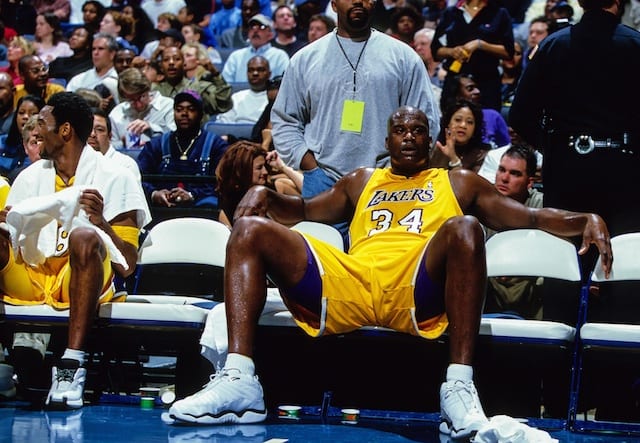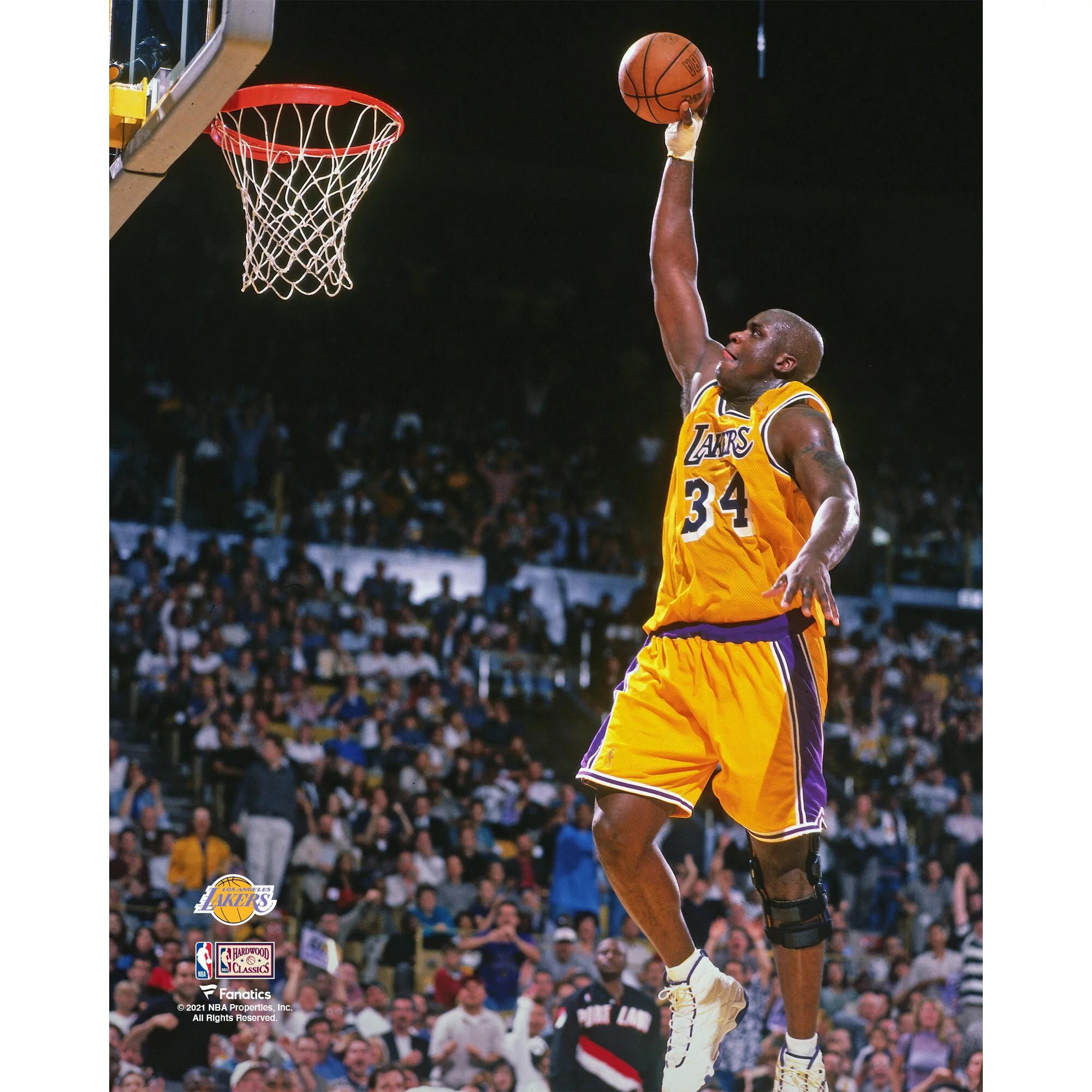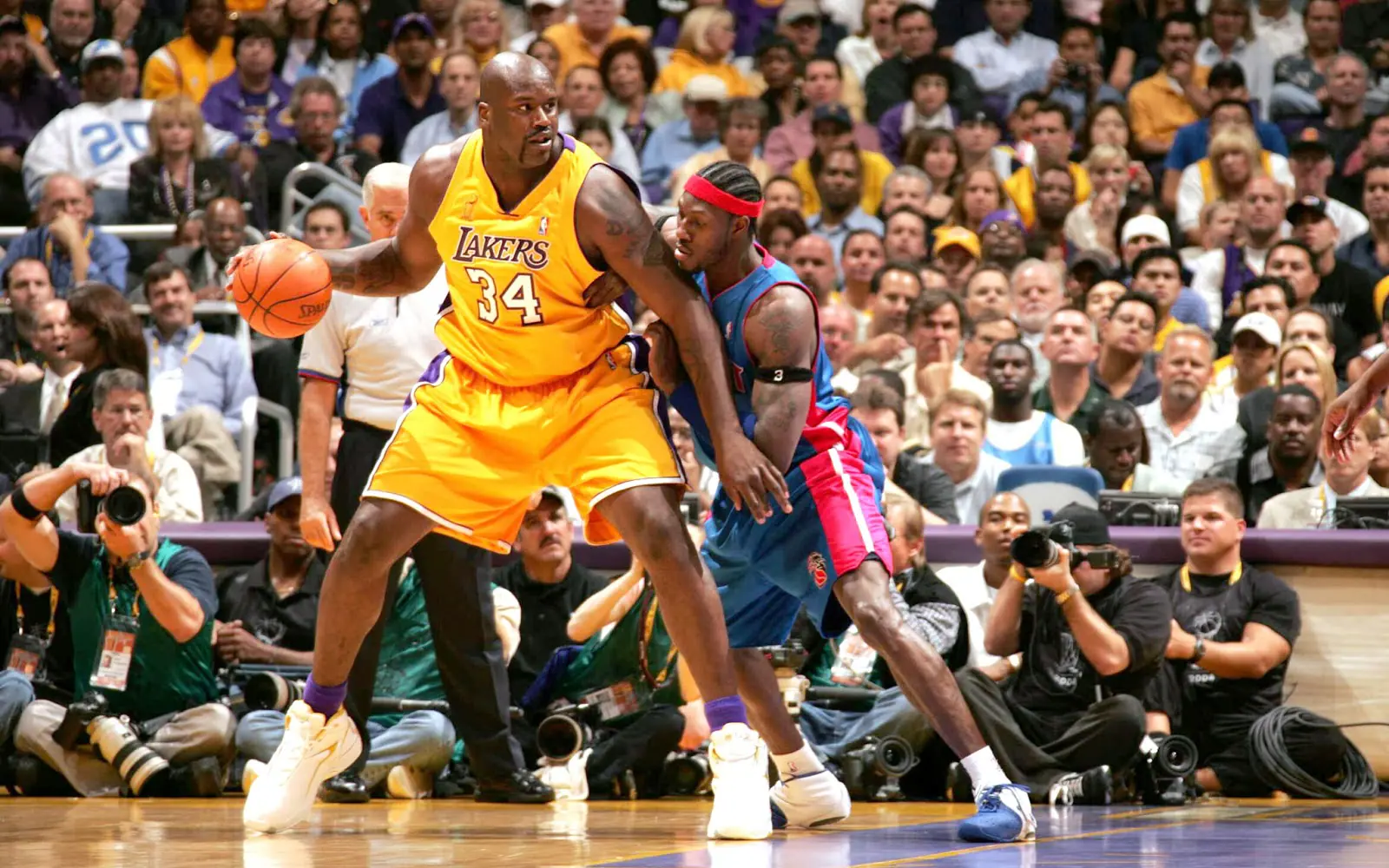Breaking the basket and causing the NBA to change the rules many times are the things that make fans remember the legendary Shaq O’Neal deeply.
Shaq O’Neal is the most feared basketball player the NBA has ever produced. Possessing a height of 2.16 m and weighing 147 kg, O’Neal absolutely dominated the area under the basket when he was playing.
Talent and natural physical condition helped O’Neal “bombard” stadiums across the United States in the late 90s and early 21st century. At that time, the world press spent a lot of “paper and ink” on describes O’Neal’s brilliance.
The legend of the Los Angeles Lakers also caused the NBA to change the rules to balance the tournament. O’Neal retired nearly 10 years ago, but the legacy he left behind for the NBA remains forever.

Shaq O’Neal is one of the largest basketball players of all time with a height of 2.16 m and a weight of 147 kg.
O’Neal is truly a “mutant” of the NBA in particular and basketball in general. Contrary to the common notion of tall players with oversized bodies, O’Neal possesses rare strength and flexibility in movement.
O’Neal took advantage of his physical superiority to press or take position in shots close to the basket to score points. Talking about defending O’Neal during his peak was the helplessness when teams had to use 2-3 people in the hope of limiting his strength.
O’Neal was soon known for his outstanding basketball talent while still a high school student. At Robert G. Cole High School, O’Neal led the school’s basketball team to 68 wins in 2 years. In his senior year, O’Neal averaged 32 points, 26 rebounds and 8 blocks to help Robert G. Cole High School win the Texas state championship and go undefeated in 36 matches.
After graduating from high school, O’Neal enrolled in business studies at Louisiana State University. He continued to pursue his passion for basketball and averaged 21.6 points, 13.5 rebounds and 4.6 blocks in 90 games after 3 seasons in NCAA Division 1 (America’s highest level student basketball tournament). ).
Excellent performance helped O’Neal be selected first by the Orlando Magic in the 1992 NBA Draft. O’Neal immediately rose to stardom in his rookie season with an average of 23.4 points, achieving a shooting efficiency of 56 .2%, 13.9 rebounds and 3.5 blocks to receive the 1993 Rookie of the Year title. He was the first rookie to appear in the All-Star tournament after Michael Jordan did the same in 1985.
The pinnacle of O’Neal’s career was his time playing at the Lakers with the late Kobe Bryant. He was the main factor helping the Lakers win 3 consecutive NBA championships in 2000, 2001 and 2002. The 48-year-old famous player is also the owner of the NBA Finals MVP title (Best player in the final series) in both 3 times crowned champion.

In 2006, O’Neal began to move on the other side of his career, but still contributed significantly to helping the Miami Heat win the NBA championship. In 2016, O’Neal was inducted into the Naismith Memorial Basketball Hall of Fame. He finished his career with averages of 23.7 points, 10.9 rebounds and 2.3 blocks in 1,207 games.
Causing the NBA to change the rules
O’Neal is famous for his giant body and overwhelming strength over the rest of the NBA’s centers when he was still playing. In his first two seasons, O’Neal repeatedly caused NBA basketball columns to collapse or break after powerful dunks.
That’s why the NBA issued regulations forcing competition courts to reinforce and increase the load-bearing strength of basketball posts after the 1993/94 season. This change helps the quality of the baskets to be better and the NBA does not have to witness O’Neal ruining the basket again. In addition, the NBA added a rule prohibiting players from swinging on the basketball rim for too long after dunking, if there are no dangerous obstacles below.
O’Neal is a top scoring machine, but still has weaknesses. O’Neal has extremely poor free-throw shooting ability, only achieving 50.4% shooting efficiency in his entire career. Taking advantage of this weakness, coach Don Nelson of the Dallas Mavericks at that time created the Hack-a-Shaq strategy. Nelson originally created this tactic to target Dennis Rodman, but it became famous and was named Hack-a-Shaq when it was too effective against O’Neal.
This strategy is simply to foul O’Neal or poor free throw shooters to force them to step up to the free throw line in the last 2 minutes of the game. Hack-a-Shaq helps teams stop their opponents’ scoring momentum and find opportunities to win when they are behind. Compared to letting O’Neal score 2 points when approaching the basket, this strategy is effective. O’Neal often only scored one or no points after two free throws.

After that, the Hack-a-Shaq strategy was applied and used freely by many football teams. Many coaches, media and audiences have criticized and evaluated Hack-a-Shaq as a negative tactic that affects the tournament. This style of play makes matches with O’Neal often become boring at the end of the match. The audience even left as soon as the football teams started using Hack-a-Shaq.
Faced with this problem, the NBA was forced to change the rules related to fouls. A player fouled without the ball in the last 2 minutes of the game will give the team 2 free throws and possession of the ball immediately thereafter.
This strategy is still used today when Andre Drummond, Dwight Howard, Hassan Whiteside or DeAndre Jordan are the victims that teams target because of their poor free-throw shooting ability. However, Hack-a-Shaq’s effectiveness is no longer high and the rate of converting defeat into victory is very low.
In the end, O’Neal once again caused the NBA to change the rules to save the tournament. The fact that O’Neal just stood still in the area near the basket made every center striker helpless in scoring points, causing the NBA to change the rules to fight him. NBA adds defensive 3-second rule.
This rule does not allow players to stand for more than 3 seconds in the trapezoidal area under the basket if they are not actively marking anyone. If violated, the player will be penalized with a technical foul. While the opponent will be awarded a free throw and control of the ball thereafter.
The NBA has never admitted adding the defensive 3-second rule was to reduce O’Neal’s dominance, but if they really did, it would be useless. O’Neal continues to dominate the tournament by “crushing” all the biggest and strongest strikers in defense and attack.